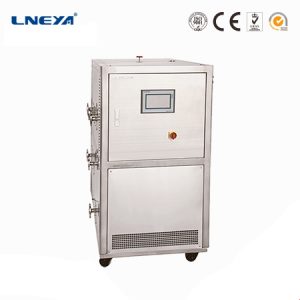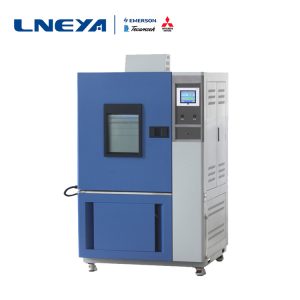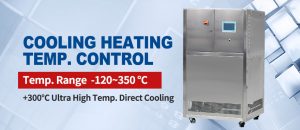Analyse der Ursachen des Lärms, der durch den Betrieb von Niedertemperaturkältemaschinen entsteht
Noise is common in the operation of industrial equipment. There are many reasons for noise, which may be caused by some environmental problems in the installation. When noise is generated, we must first confirm the cause and whether it is an internal component. The problem is raised because if a problem occurs and the replacement or repair is not stopped in time, the low temperature chiller will not work properly.
The environment and location of the device can cause noise problems, and if it is in a relatively small environment, the noise will be “amplified”. A smaller environment will make the normal operation sound louder and will sound out of normal operation. It is recommended that both air-cooled and water-cooled units be installed in a relatively open environment with no foreign objects around them. If the requirements are higher, the soundproof wall can be installed and ventilation and heat dissipation can be observed.
There is no flatness processing under the device position, which will result in displacement during normal operation, as well as vibration and shaking during normal operation. Under displacement conditions, the amplitude of the vibration will increase and a large amount of noise will be generated.
Due to the operational noise caused by the low temperature chiller itself, air coolers and water coolers are more prone to “noise” than the latter due to structural differences. It is well known that air-cooled chillers are cooled by a fan for the condenser, while the water cooler is cooled by a cold water tower system for the condenser. Compared to the noise of the cold water tower (usually placed at a high position, it is different from the position of the water cooler). The fan is noisy and integrated with the chiller main unit, so it is easier to feel the noise (can remove the blades or fill the bearings with smooth oil).
In addition, the compressor of a low temperature chiller is one of the sources of noise. The selected compressor can have low noise characteristics and the chiller noise must be low. Otherwise, the overall chiller will be noisy.
In addition to the noise figures of the chillers used in low-temperature chillers, whether it can be operated continuously for a long time, whether to add appropriate smooth oil, whether it can be regularly maintained, and whether the service life is too long is the key to balancing the noise elements of low-temperature chillers. Where. In addition, there are pumps for both air and water cooling. If the pump is running too loud, it may need to be cleaned.
Then, as an important part of the Niedertemperaturkühler, in order to reduce losses and generate noise, we should always maintain to extend its service life and improve operational efficiency:
1. Check if the oil level of the fuselage and oiler is normal.
2. Check the movement flexibility of the oiler and the amount of oil injected
3. Check the oil leakage, water leakage and air leakage of the compactor and take corresponding measures to remove it.
4. Check that each valve is open.
5. Check that the vibration of the machine is normal. Otherwise, it is necessary to stop the inspection and scanning.
6. Check that the value of each meter is normal.
7. Check the smooth oil process (fine) filter and replace the fine filter according to the conditions. Stop cleaning the strainer.
If you have any knowledge of the use, maintenance, equipment prices, etc. of cryogenic chillers, please contact LNEYA and discuss: sales@lneya.com/LNEYA.COM.

Verwandte Empfehlungen
-
LNEYA temperature control system AH series commentary
1778Refrigeration heating temperature control system AH series, suitable for high heat release, suitable for SUS reactor, temperature difference > 150 ° C, can quickly cool high temperature reaction, polymerization reaction and rapid heating and co...
Details anzeigen -
Rapid temperature change test chamber temperature control instructions
1739The selection of the humidity range of the rapid temperature change test chamber should be noted that the corresponding temperature range should be indicated after the humidity index or the dew point temperature should be given. Because relative h...
Details anzeigen -
Micro-channel reactor thermostatically controlled air-cooled chiller compressor troubleshooting meth
1732The air-cooled chiller is a temperaturecontrol device that is widely used in the microchannel reactor industry. WuxiGuanya LNEYA has produced a cold and heat source thermostatically controlledair-cooled chiller for the microchannel reactor indu...
Details anzeigen -
Heating and cooling system for chemical reaction kettle reaction process
1795In the process of chemical chemical reaction, material temperature is an important production process parameter. For example, in salt crystallization, solution separation, organic pigment and intermediate processing, temperature control is particu...
Details anzeigen
 LNEYA Industriekühler Hersteller Lieferant
LNEYA Industriekühler Hersteller Lieferant














